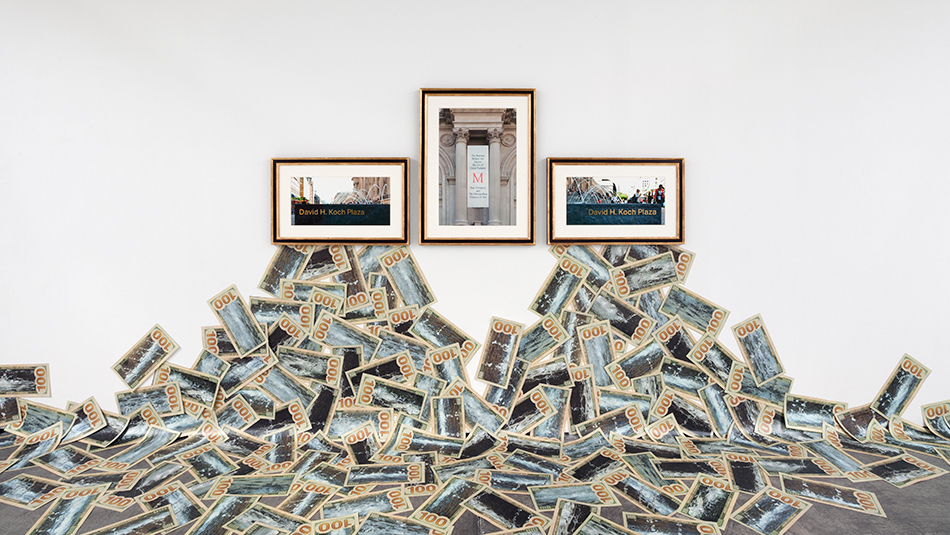Finally embraced by museums that long considered him a pariah for his critiques of institutional power, Hans Haacke’s critical eye remains unchanged: his new exhibition at Paula Cooper includes a new work about the Met’s acceptance of donations from David H. Koch, the billionaire philanthropist who’s financially supported conservative political campaigns.
- “No more weird architecture,” proclaimed Chinese president Xi Jinping in a recent speech. China’s recent building boom has birthed design novelties, from a doughnut-shaped skyscraper in Guangzhou to the Koolhaas-designed CCTV headquarters in Beijing, dubbed “big pants” by critics. Instead of clever architecture, Xi wants more artworks that are like “sunshine from the blue sky and the breeze in spring that will inspire minds, warm hearts, cultivate taste.”
- Tania Bruguera revisits the topic of immigration by directly appealing to the pope. Her new project involves thousands of postcards—signed by museum and gallery visitors—asking Pope Francis to grant citizenship to illegal immigrants in the Vatican. “It is a test case for how lawmaking functions as a historical discursive structure that responds to the present conditions, and shifts and changes according to the needs of citizens.”
- Speaking of socially conscious art: Mel Chin’s Fundred Dollar Project invites us to recognize our responsibility for our cities. With his Safehouse, which addresses the thousands of unfixed lead-contaminated homes in New Orleans, he’s been collecting symbolic $100 bills created by children and caregivers to present to Congress in exchange for real lead poisoning prevention.
- How would the role of the museum be affected if it shares its curatorial power with the public? Crowdsourced exhibitions have proven to benefit some museums with increased visitors and grants, but concerns over the compromised legitimacy of artworld professionals and institutions raise a need to rethink the museum’s role.
- “What is a work of art in the age of $120,000 art degrees?” The arts collective known as BFAMFAPhD recently extrapolated data from the US Census Bureau to reflect on the financial realities of graduating with an arts degree in the current economy, adding that “the fantasy of future earnings in the arts cannot justify the high cost of degrees.”
- How has the role of the artist changed in recent times? For her new book, Sarah Thornton interviewed thirty-three creators—from Jeff Koons to Yayoi Kusama–to examine the elevated role of contemporary artists–the “ultimate individuals.” She explores the possible positions artists occupy through the themes of politics, kinship, and craft.
- From Marina Abramovic and Kara Walker to Performa’s RoseLee Goldberg and the Walker’s Olga Viso, Artnet rounds up the 100 most powerful women in the art world.
Follow Art News From Elsewhere on the Walker Art Center homepage or via @walkermag, the Walker’s editorial-focused Twitter feed.




